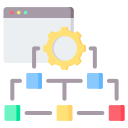Crafting Interfaces with Xamarin.Forms
Design pages with Grid, StackLayout, and CollectionView, and structure navigation with Shell for cleaner routes and tabs. Data binding reduces boilerplate, and resource dictionaries keep styles consistent without scattering visual choices throughout code.
Crafting Interfaces with Xamarin.Forms
Use OnPlatform and OnIdiom to tune spacing, sizes, and behaviors across phones and tablets. Respect safe areas, handle notches, and account for different densities so your interface feels native, balanced, and thoughtfully composed on each device.








